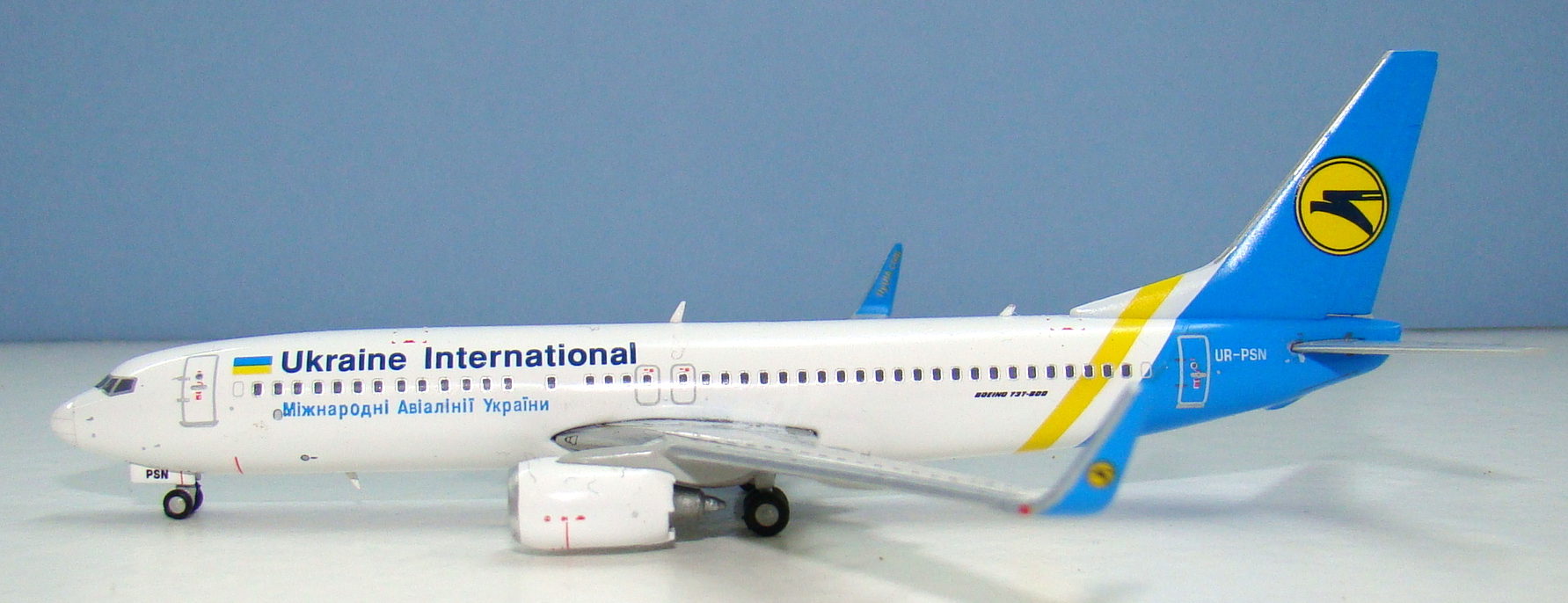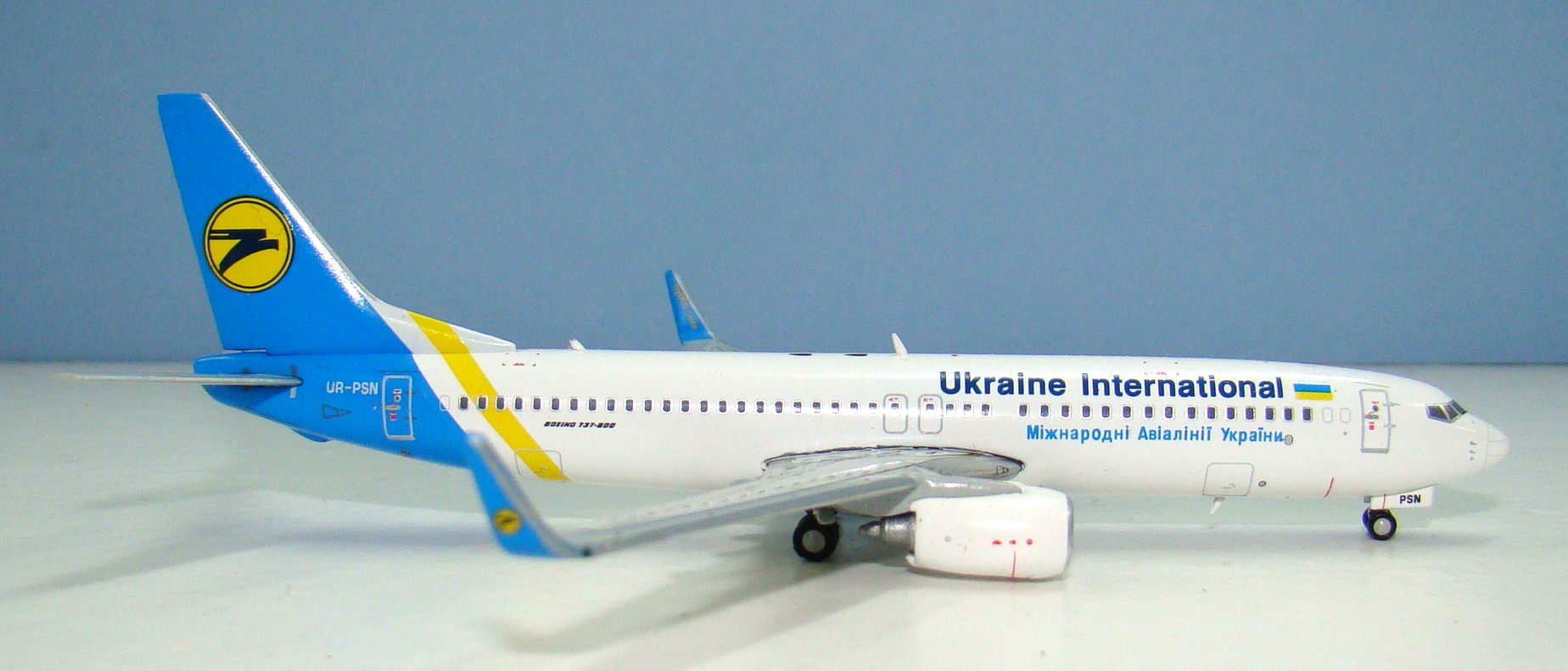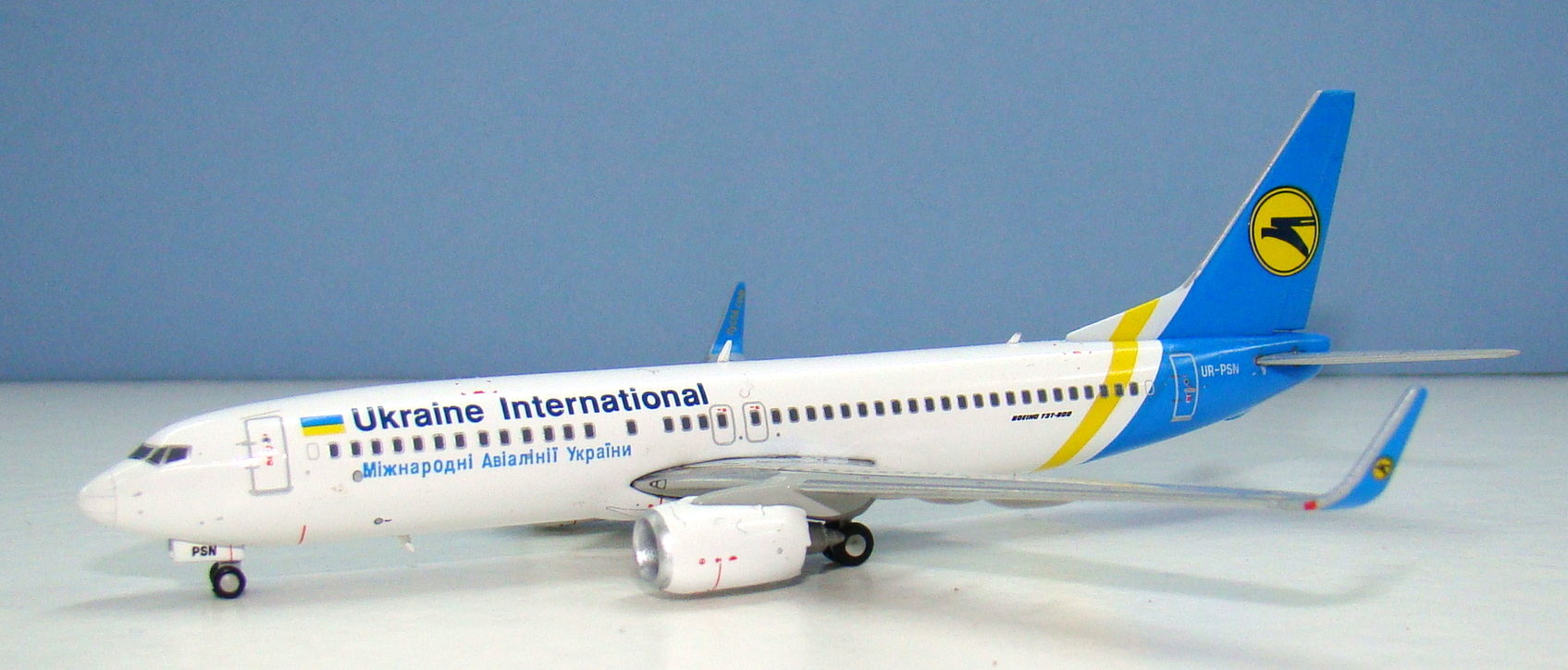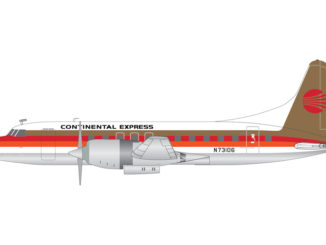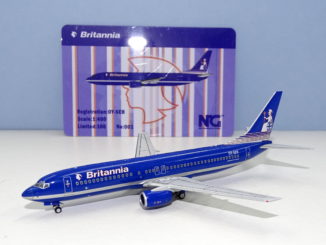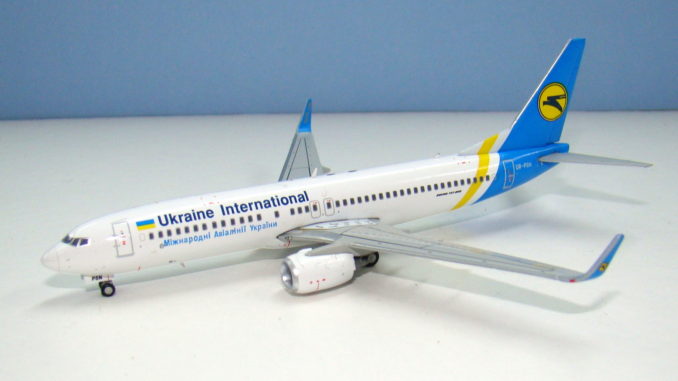
The Ukraine is a huge nation, but interestingly, until the release of this aircraft, there had not been a single 1/400 scale model from this country produced. This is no doubt in part to the conservatism of the major manufacturers and their difficulty in finding new sales avenues in non-traditional countries. Certainly releases for the Russian and former Soviet/Eastern-Bloc nations have been thin on the ground until recently. It is promising to see Gemini spread itself to more interesting climes and to be joined by its partner JC Wings. Together they have hopefully started a trend of more slavic releases like this colourful 737, the recent Rossiya 747s/777s and upcoming Nordwind 737s.
THE REAL THING
The Ukraine has had a turbulent few years since the troubles with Russia began, but the failure of its major competitor Aerosvit and the withdrawal of service by other airlines has meant that Ukraine International Airlines has not suffered from the unrest. On the contrary it has grown by 50% since 2013 and expects to expand by 25% in 2017 and then 15% per annum afterwards.
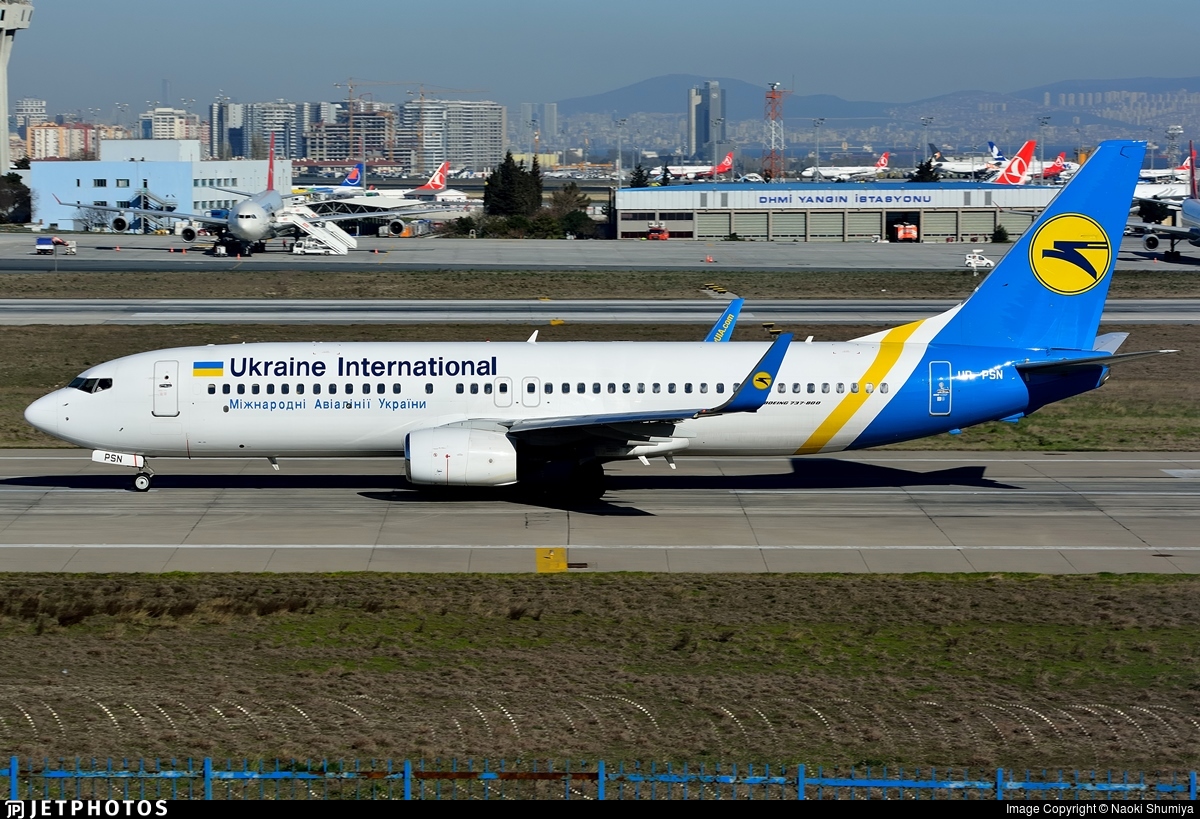
UIA is basing much of this expansion on transit traffic with increasing services to Eastern Europe, Central Asia and the Middle East. Previously it had based most of its services on Western European routes and connecting passengers accounted for only 10%. The new target is instead 60% transit passengers. Of course this is partly a necessity due to limited domestic opportunities and the collapse of incoming travel to Ukraine itself. Additionally the airline is now using Boeing 767s to fly to Asia and North America long haul. It helps UIA significantly that Kiev, its main base, has at present very low market penetration by low cost carriers, although UIA in theory is more competitive due to its low cost base and relatively high density aircraft configurations.
Ukraine International has been a Boeing 737 operator since 1994 and has operated series 200/300/400/500. There are still series 300 and 500 in service but the majority of the fleet has been rolled over to next generation 737-800s, with a small number of 737-900ERs also. The majority of the 21 737-800s currently in the fleet are leased and second-hand. They have come from a wide range of previous homes with about half of the fleet dating from the period 1999-2001 and the other half from 2009-2012. Only two aircraft are newer than 2012.
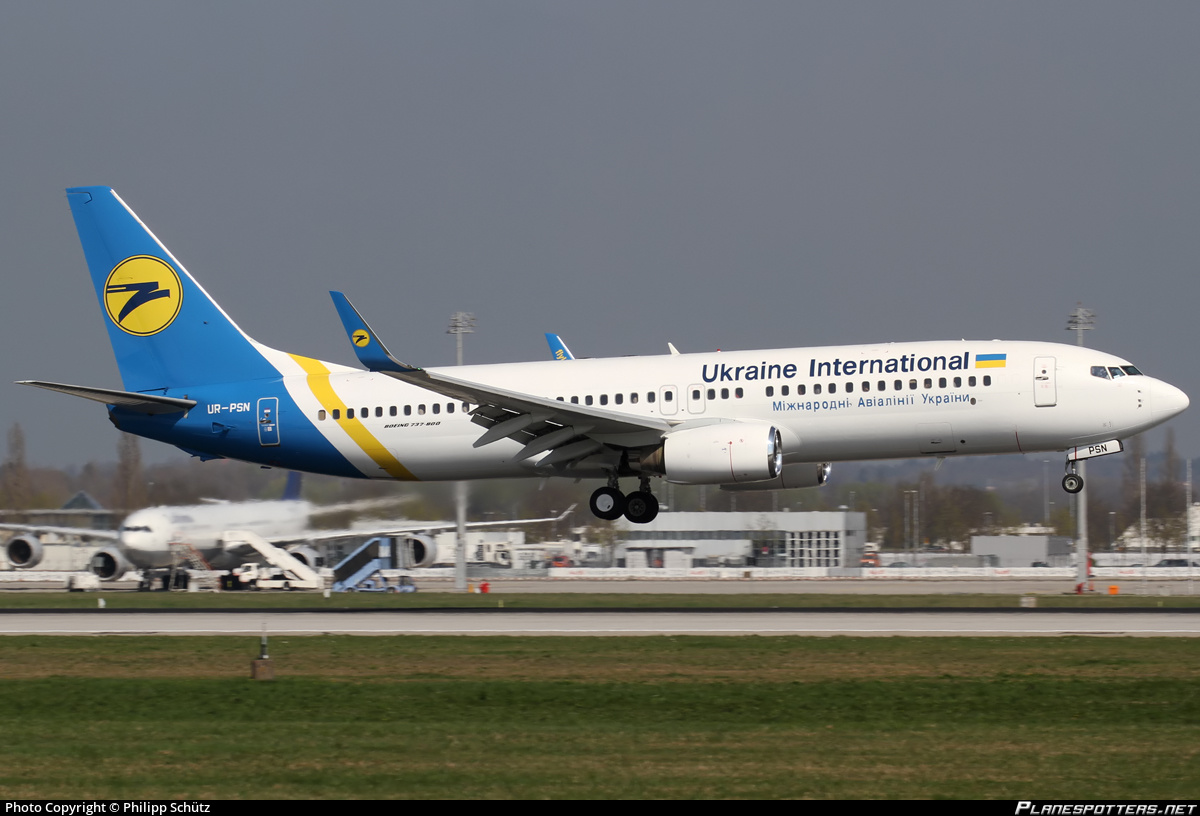
UR-PSN is a 737-86N and the second oldest series 800 in the fleet. She first flew, as N1786B, on January 20, 2000 and was delivered to Sun Express, through the lessor GECAS, as TC-SUB on February 4th. She was returned to GECAS after four years and exported to China where she joined the Hainan Airlines subsidiary China Xinhua Airlines as B-5080. She was returned to the lessor in August 2015 and joined Ukraine International in April 2016. Despite the age of the UIA fleet no less than eleven of the 737-800s joined during 2016. Presumably early model 737-800s are relatively cheap to lease nowadays and are an attractive proposition for airlines like Ukraine International.
THE MODEL
The format for my reviews is to split them into three key areas:
- The mould of the aircraft
- The paint and livery
- Printing and quality control
Each can get a maximum score of 10 for a section giving a maximum combined total score of 30.
THE MOULD
I have reviewed this mould once before already. It is used by both JC Wings and Gemini Jets and dates from 2014. JC Wings have updated the mould so it is much improved from the very first releases but it is still not faultless.
Starting at the rear the tail end is very good. The shape of the rear fuselage, complete with tailstrike bumper, is perfect and the tail is good, although perhaps a little tall and thin. It is also made of plastic not metal. The shape of the wings is also good, but it is a combination of the wings and undercarriage that creates one of the mould’s issues. Fixing the mould’s earlier wing height issues means the engines don’t have enough clearance at ground level. This may be caused by the wings being too level but is also due to the engine pylon shape not mounting the engines high enough.
Moving to the nose and the shape around the cockpit is much improved over the original releases, as is the nosecone. Even so, the shape is not perfect, albeit better than the Phoenix mould. The nosegear is also an area of concern as the gear door is too large, flat bottomed instead of gently curved, the nosewheel too large and the gear leg a little too short.

Interestingly the aerial fit of this model is different to that of the China Eastern JC Wings 737 I reviewed in March. This Ukrainian example has only three of the five aerials whereas the China Eastern had four of the five the real thing has. Even more oddly the Gemini 737 has the smallest aerial just ahead of the tail whilst this was missing on the China Eastern, which instead had both of the rear underside aerials, which are missing on the Ukrainian. I don’t understand why there is this variability. As is usual with JC Wings / Gemini Jets although the aerials are shaped well they are a little too large. As I said before however it’s not as big an issue as on the A320/321 mould and I do like them having aerials.
This is a passable but not great 737, and it is much inferior to the newer 737MAX moulds. It is operating on about the same level as the Phoenix 737NG but is inferior to the Panda version.
SCORE – 7
PAINT & LIVERY
The Ukraine International livery remains essentially unchanged since the airline began operations in 1992 with Boeing 737-200s, and why not? It is a very attractive and colourful livery that utilises the yellow and blue colours of the Ukrainian national flag to its advantage. The tail and rear fuselage is a light blue with a yellow band in front of it. To be honest I’m not sure what exactly the tail logo represents but my best guess would be it is a heavily stylised eagle in flight.
The livery colours Gemini has used are fine. There are only four, including white, but the yellow, light blue and very dark blue are all correct far as I can tell. Placement of the tail livery elements is good including the natural metal leading edge of the fin. Placement of the main titles is also good, and although I can’t read Ukrainian, the home nation titling beneath the window line looks accurate also. The registration is correctly on the nosegear doors and the national flag ahead of the main titles.
My only criticism of the livery application is the winglets. They generally make the grade but the UIA logo on the outer side is too small and the flyUIA titles on the inside are too high up the winglet; hardly major issues but nonetheless slightly inaccurate.
SCORE – 9
PRINTING & QUALITY CONTROL
Printing on JC Wings and Gemini models is usually very good and there is plenty of great detail to see here on this model. The cargo doors, engine nacelles and fuselage roof ‘cut here in emergency’ panels are all beautifully detailed. More disappointing are the engine fanblades, which are once again bright silver rather than a more realistic dark grey.
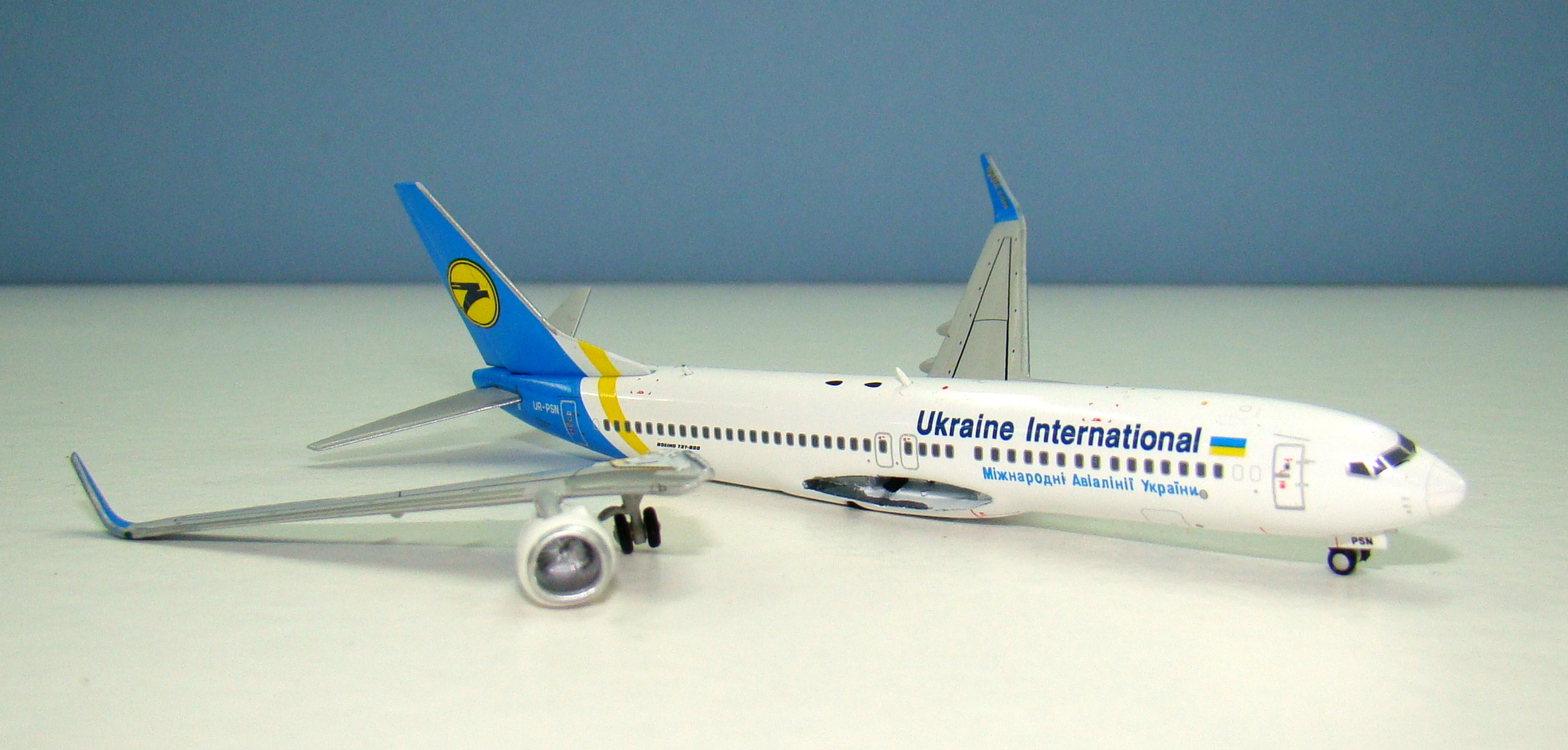
Construction of the model can be made to look good and what I mean by this is that when it arrived the starboard wing was loose in the packet. I know that Donald checks each model before he despatches them to me so this must have happened in the post. These things happen but it does suggest not enough glue was used. At least the wing has unattached itself without causing any damage to the model and it can be easily reattached, fitting firmly in place.
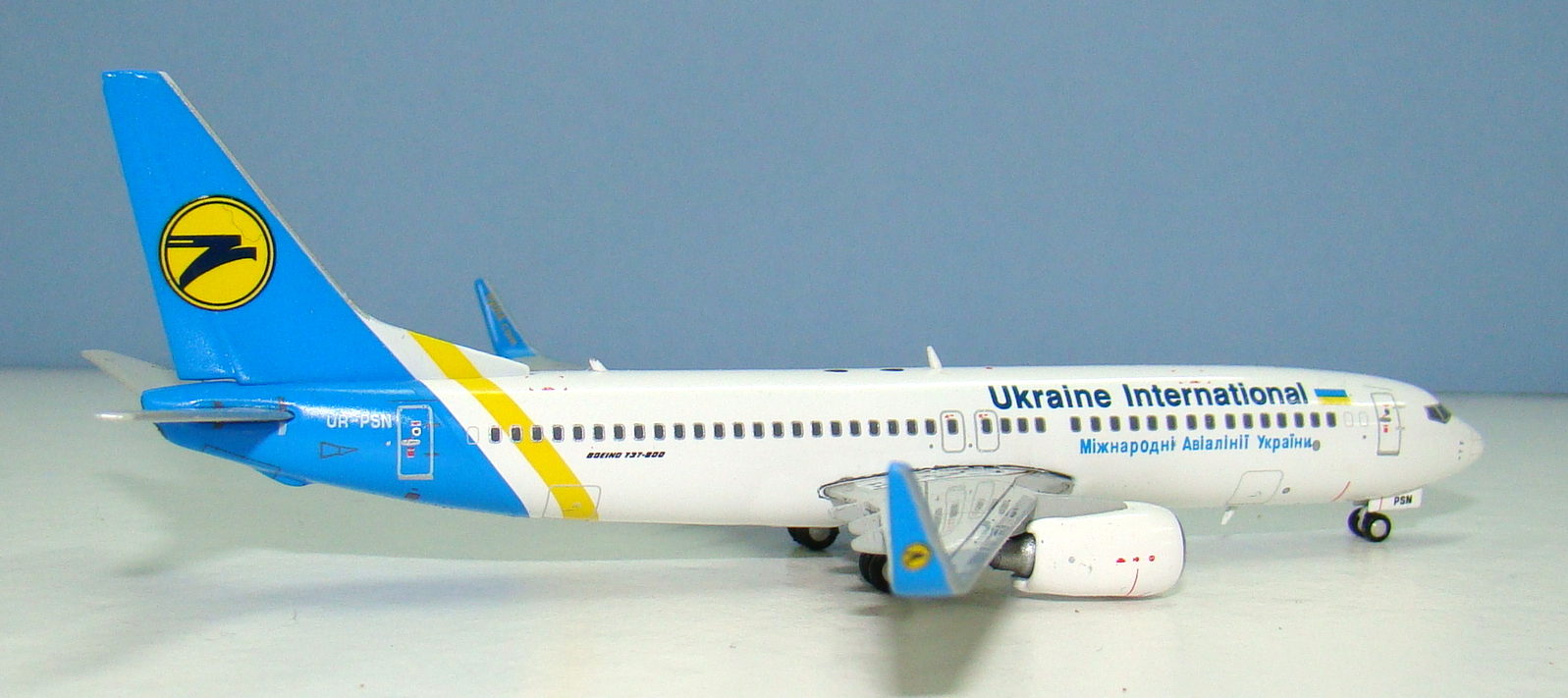
Otherwise the only imperfection is the all too frequent tyre tab, this time found on the starboard nosegear tyre.
SCORE – 7
CONCLUSION
This is a solid release from Gemini of an interesting, and for them, unusual airline. In general the execution of the model is pretty decent, but just fails to reach the heights of greatness for the usual sort of issues that I seem to mention fairly frequently (tyre tabs, silver fans, a wing off, winglet printing). None of these items is major in itself however and if you’re looking to add some diversity to your collection this model is well worth a punt.
FINAL SCORE – 23



